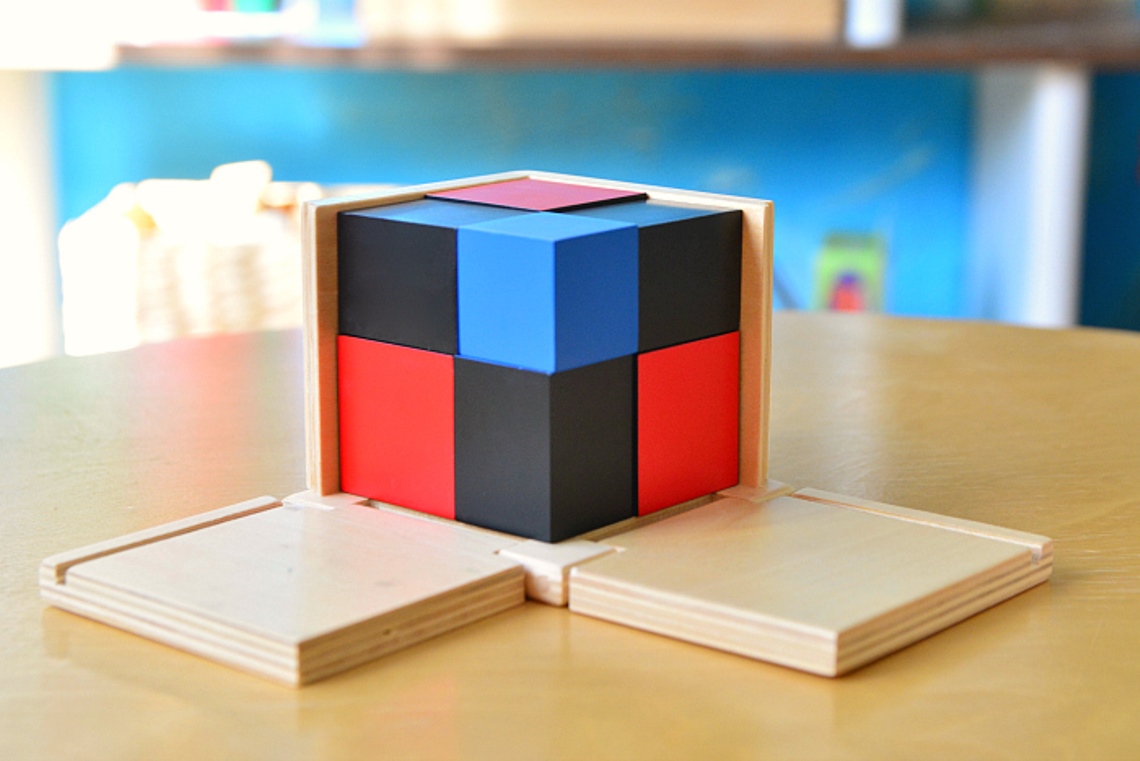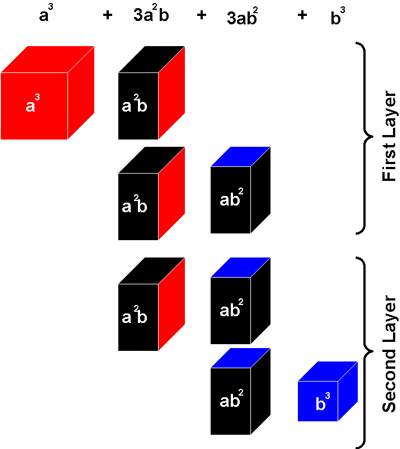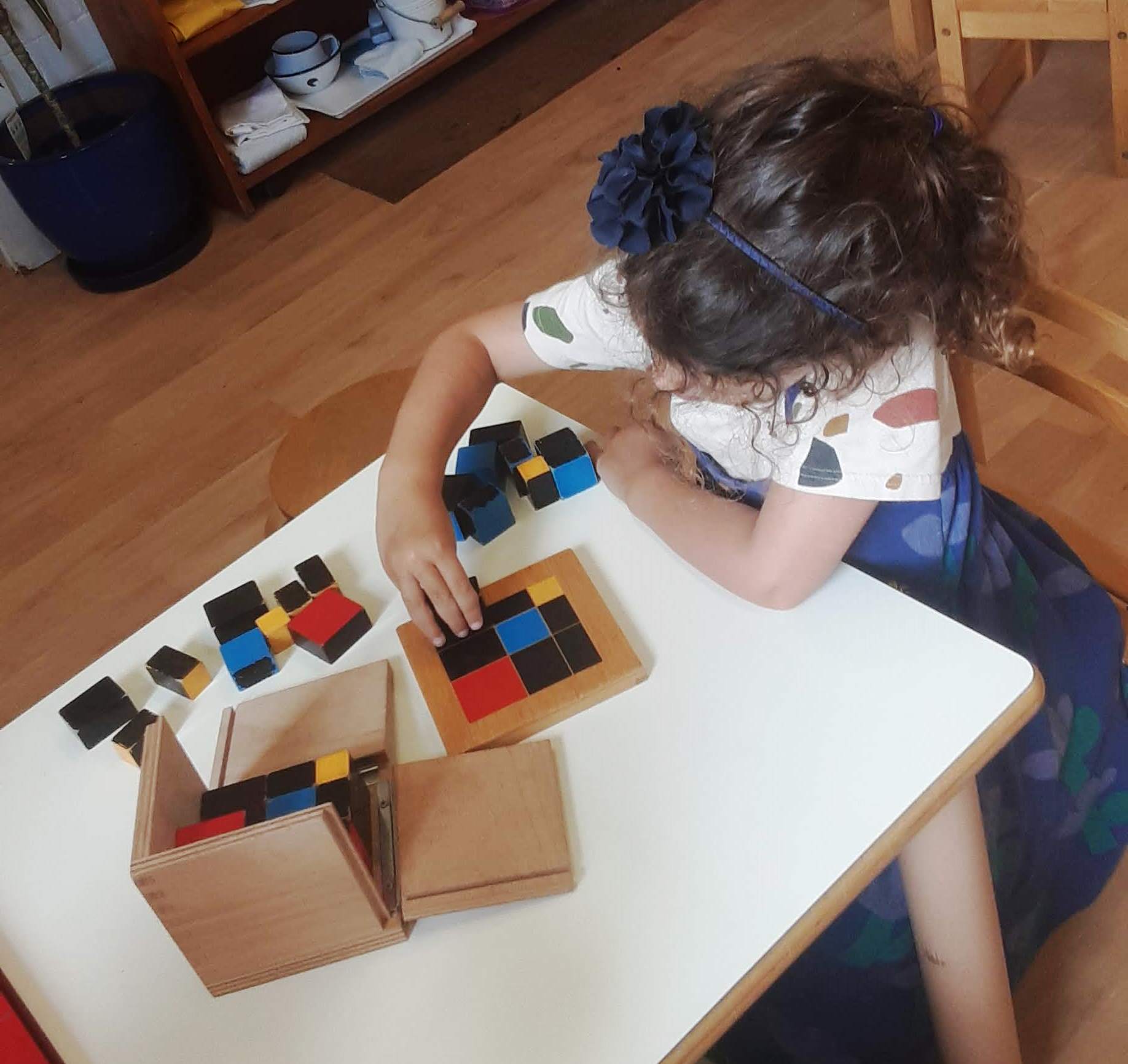
Maths: The Binomial Cube explained
The Binomial Cube is one of those amazing Montessori materials.
It introduces abstract maths concept to children as young as four-years-old without them even knowing it. The early sensorial experience with the cube inspires them again at age eight or nine when they use the cube for algebra.
The material provides the all important bridge between concrete and abstract thinking. And not so amazingly (because it’s logical) the child develops a much deeper understanding of the maths.
What is it?

The cube is composed of eight wooden blocks which fit together in a binomial pattern, representing the cube of two numbers, (a + b), or tens plus units. All the blocks fit into a natural wood box.
Each box contains colour coded blocks;
One red cube a³, One blue cube b³
Three red and black blocks “a²b”
Three blue and black blocks “ab²”
The algebraic expression represented is :
(a + b)³ = (a + b)(a + b)(a + b) = a³+3a²b+3ab²+b³
Purpose of the material
Cycle 1: Introduced at around four years of age, the purpose of the material is not to teach maths, but instead, to provide a challenge for a child's ability to find patterns and relationships. Therefore, the material is presented as a sensorial activity. It is presented like a 3D puzzle. People who are masters at puzzles will tell you that they take out, and organise, puzzle pieces very carefully. This is what is modelled for the child in this activity.

The child is not asked to understand the formula, but is using the cube in a mathematical way. The child will build up a predisposition to enjoy and understand mathematics later.
Cycles 2 & 3: The Binomial is used in the primary years to understand and experience algebraic concepts. The numerical activities allow the children to cube numbers like 34 or 67 or 89, and the whole process is logical because the Binomial’s cubes and prisms are used as a literal representation of the numeric values. This work ultimately prepares them for high school mathematics.
Got it?
Don’t worry if the algebra above sends you starry eyed! Just remember that the purpose of this material is to progress the children towards an understanding of cubing and early algebra which then flows into high school maths.